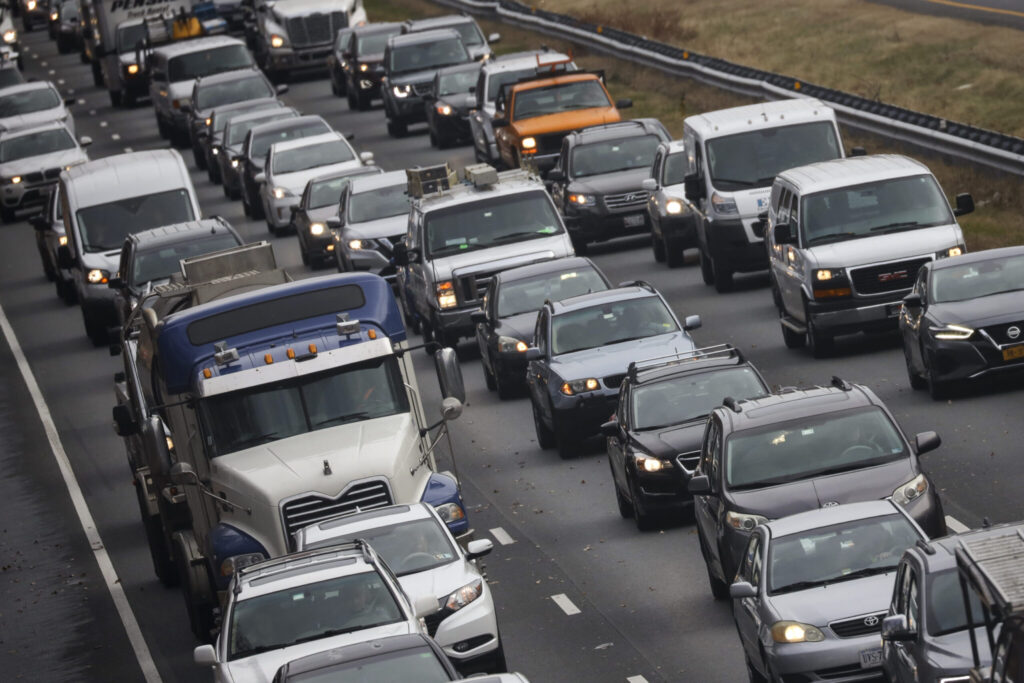
(Drew Angerer/Getty Images)
Drivers in rural Arkansas counties died in roadway accidents at a higher rate than those in urban areas from 2016 to 2022, according to data presented by the Arkansas Center for Health Improvement.
“In rural areas, you’ve got less traffic, so you have the potential to drive at higher speeds,” said Craig Wilson, ACHI’s health policy director. “You’ve got, sometimes, farm equipment that enters the roadway that contributes to a less controlled environment.”

The data dashboard from the nonpartisan health policy center shows a year-by-year trend, a demographic breakdown of the fatal accidents and whether motorists and motorcyclists were wearing protective devices like seatbelts and helmets. The data can be sorted by each year from 2016 to 2022 and by race, age and gender within the selected year. A map also shows where in the state the crashes occurred.
The release of the roadway fatality data, originally from the National Highway Traffic Safety Administration, was released in coordination with an Arkansas State Police campaign for safe holiday travel, Wilson said. For about the last 10 years, ACHI has partnered with the state police, and in the last two years has heightened its focus on data.
This year, that campaign focused on aggressive driving and road rage.
“As the holiday season kicks off this week, people are traveling more and have higher levels of stress,” Col. Mike Hagar said in a press release. “Please help us keep the roads safe by keeping tempers under control. And try to remember what we tell our children as they learn to drive — courtesy is contagious.”
ASP has tracked more than 700 cases of road rage this year, and about 300 of those have involved weapons. Eighteen instances with weapons resulted in arrests, according to ASP.
“The Thanksgiving holiday season is one of the most traveled holidays,” Hagar said. “We expect heavy traffic this week through the Thanksgiving weekend. We want everyone to make it to their destination safely. State Troopers and local law enforcement will be working overtime to ensure our roadways are as safe as possible.”
GET THE MORNING HEADLINES.
According to the ACHI data, Arkansas reported the nation’s fourth-highest rate of roadway deaths in 2022. A total of 641 Arkansans died on the road in 2022 at a rate of 21.1 deaths per 100,000 people. The national rate in 2022 was 12.8 deaths.
Monroe County in the Arkansas Delta reported the state’s highest fatality rate of 58.8 deaths per 100,000 residents during the seven-year period analyzed, according to ACHI data. The county has a population of approximately 6,500.
Rural Arkansans face long ambulance wait times, nationwide study says
Wilson said the higher fatality rates in rural areas could also be attributed to slower emergency response times.
Despite a greater number of drivers in urban areas, ACHI reported lower fatality rates in places like Pulaski and Washington counties, where population counts stretch into the hundreds of thousands. Wilson said this is typical as the high raw data counts are equalized with the formula used to calculate the fatality rate.
Urban areas, however, seem to report more pedestrian fatalities on roadways. The Little Rock metro ranked 10th deadliest in the country for pedestrians this year, the Arkansas Times reported. Pulaski County, where Little Rock is located, reported a fatality rate of 17 deaths per 100,000 residents, according to the data.
Data breakdown
Statewide, the number of roadway deaths rose 28% from 2019 to 2020, and it has remained high. Wilson said the COVID-19 pandemic caused older drivers to stay at home while younger drivers, who tend to be less cautious, were on the roads.
The highest number of roadway fatalities reported from 2016 to 2022 were among older adults, males and white people, ACHI reported.
Of the total 4,089 deaths during the seven-year period, people 65 and older accounted for 745 deaths, or 18%. Drivers aged 25-34 closely followed with 714 deaths during the same time period.
Although the Black community represents about 15% of Arkansas’ overall population, the demographic represented more than 31% of the total deaths from 2016 to 2022. ACHI reported that both Black and white drivers died at a disproportionate number.
Males made up about 70% of the deaths during the seven years ACHI analyzed.
Nearly half of people who died in an automobile accident were not wearing a seatbelt or other protection. About 57% of motorcyclists who died were not wearing a helmet, ACHI reported.
Arkansas law does not require anyone older than 21 to wear a helmet on a motorcycle.
The data showed a mix in crash causes. While about 20% of accidents were reported due to speeding, 39% were distinctively not for speeding and the remaining 41% were caused by an unknown behavior, ACHI reported.
Regarding policy recommendations, Wilson noted sufficient staffing and resources for law enforcement. He also said it was important to use the data findings in local communities to identify areas that have a high potential traffic accidents and fatalities.
YOU MAKE OUR WORK POSSIBLE.

